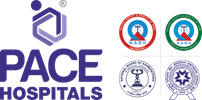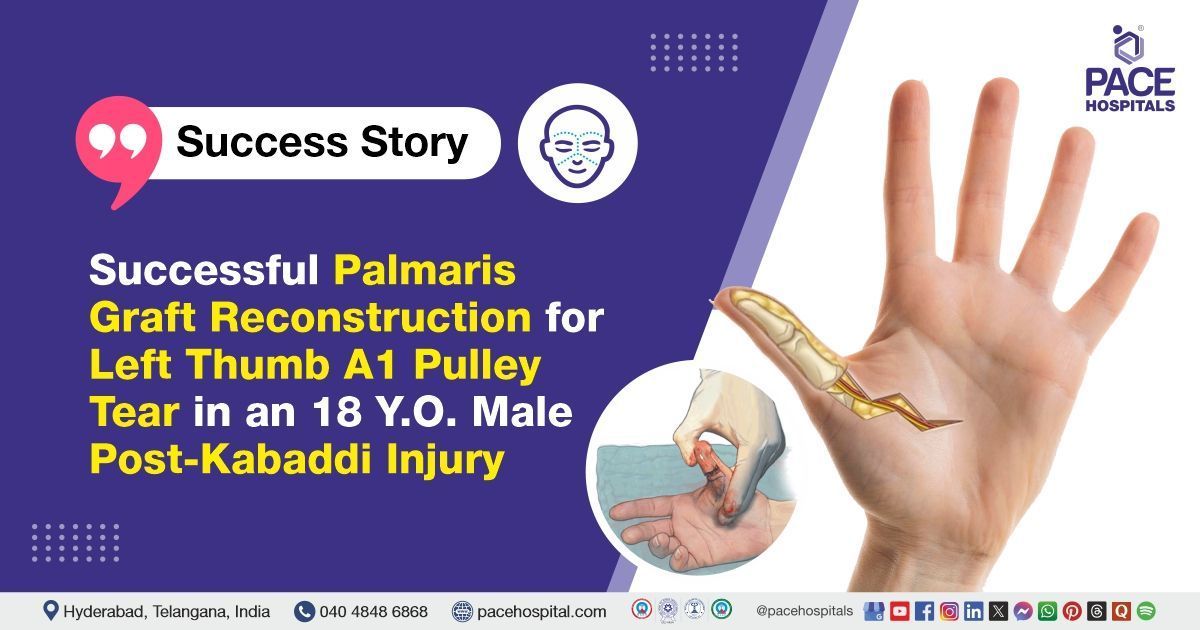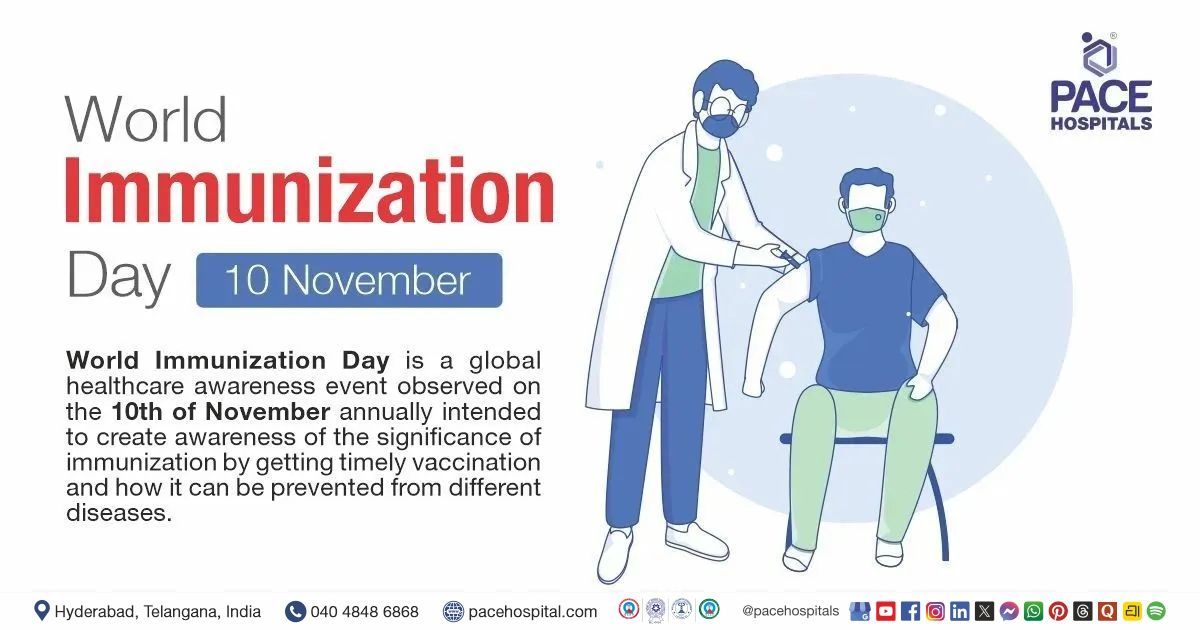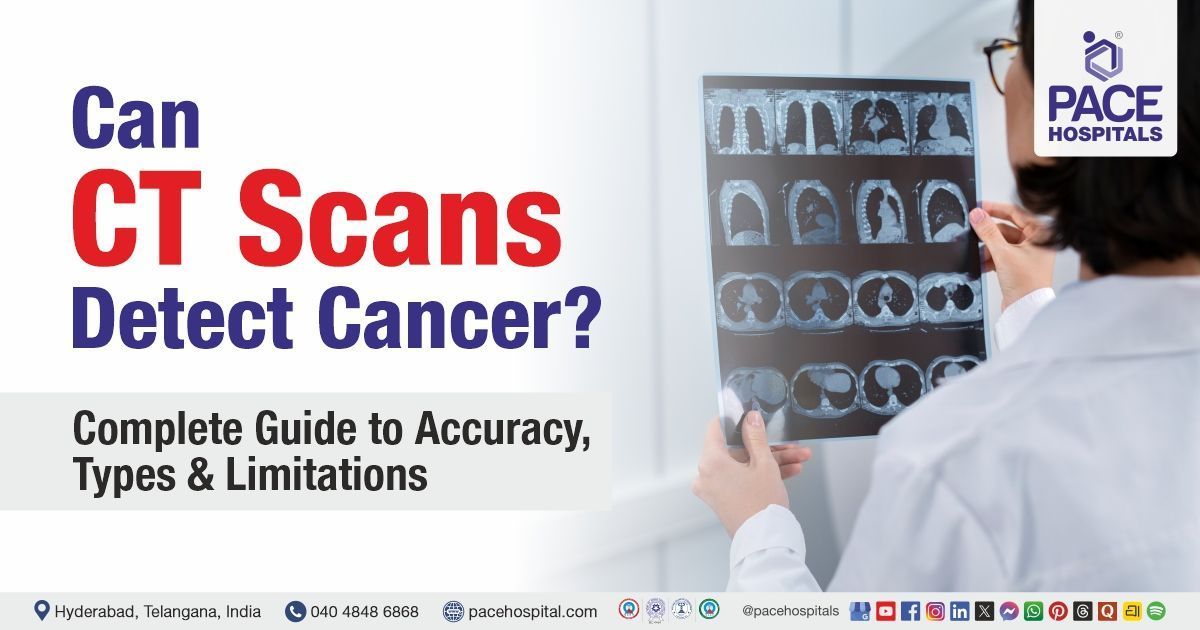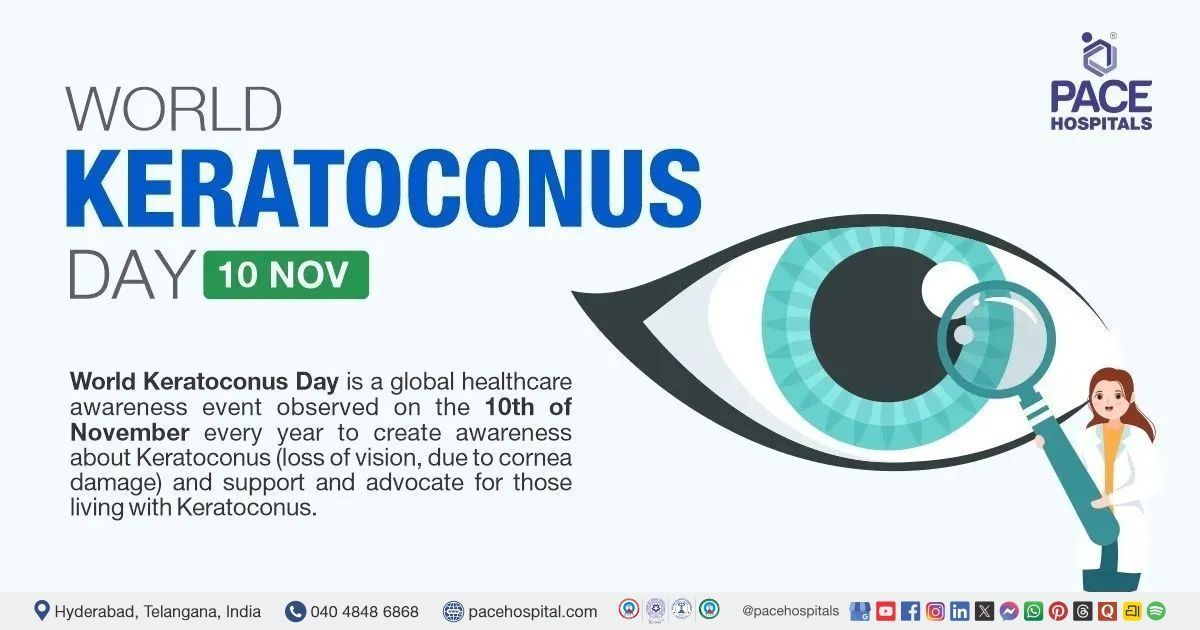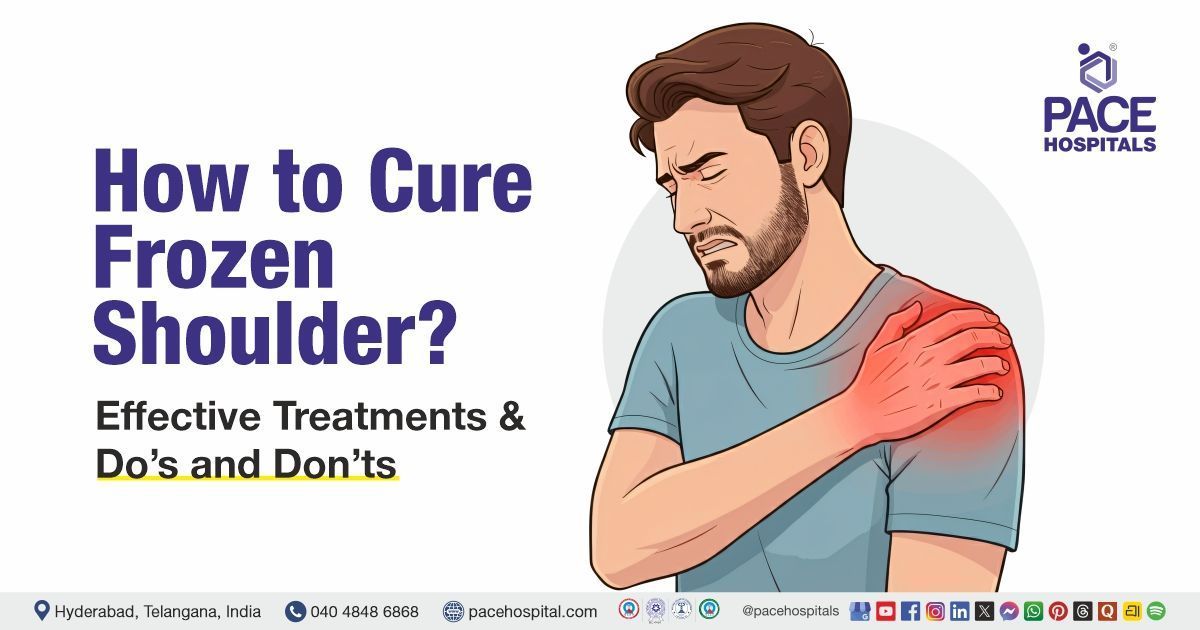Successful Palmaris Graft Reconstruction for Left Thumb A1 Pulley Tear in an 18 Y.O. Male Post-Kabaddi Injury
PACE Hospitals
PACE Hospitals' expert Plastic and Reconstructive Surgery team successfully performed an exploration and reconstruction of the left thumb A1 pulley using a palmaris graft in an 18-year-old male diagnosed with a left thumb A1 pulley injury. The aim of the procedure was to restore normal flexor tendon gliding and thumb function by reconstructing the damaged pulley, thereby enabling proper flexion and preventing long-term functional impairment.
Chief Complaints
A 18-year-old male patient with a
body mass index (BMI) of 20 presented to the Plastic and Reconstructive Surgery Department at
PACE Hospitals, Hitech City, Hyderabad, with complaints of pain and deformity of the left thumb following an injury sustained while playing Kabaddi two months ago.
Past Medical History
The patient underwent septoplasty 1.5 years ago for the correction of nasal obstruction. He has no known history of medical illnesses or chronic comorbid conditions to date.
On Examination
On general examination, the patient was conscious, coherent, and cooperative. There were no signs of pallor, icterus, cyanosis, clubbing, lymphadenopathy, or pedal edema. Vital signs were stable and within normal limits. Local examination of the left thumb revealed deformity consistent with the injury, but no signs of active infection or swelling were noted.
Diagnosis
Following the clinical examination, the Plastic and Reconstructive Surgery team conducted a thorough assessment, including a detailed review of the patient’s medical and surgical history, with presenting complaints of pain and deformity of the left thumb. A focused evaluation of the left thumb was performed to assess the functional impairment and structural damage. MRI imaging confirmed a complete tear of the left thumb A1 pulley.
To confirm the diagnosis and determine the extent of injury, the left thumb was carefully examined. The assessment revealed a complete rupture of the A1 pulley with associated deformity and compromised tendon function. No signs of active infection or systemic complications were noted at the time of discharge.
Based on the confirmed diagnosis, the patient was advised to undergo
Left Thumb A1 Pulley Injury Treatment in Hyderabad, India, under the Plastic and Reconstructive Surgery team to restore normal tendon function and prevent long-term disability.
Medical Decision Making
After a detailed consultation with Dr. Kantamneni Lakshmi, Senior Consultant Plastic, Reconstructive & Aesthetic Surgeon, a thorough clinical evaluation was performed focusing on the patient’s presentation of left thumb A1 pulley injury with pain and deformity following trauma during Kabaddi. MRI findings confirming a complete tear of the A1 pulley were reviewed comprehensively to assess the extent of injury and tendon involvement.
It was determined that the patient had a near-total rupture of the left thumb A1 pulley, necessitating surgical exploration and reconstruction using a palmaris graft. This approach was identified as the most effective intervention to restore pulley integrity, prevent tendon bowstringing, and preserve thumb function.
The patient and his family members were counselled regarding the surgical procedure, potential intraoperative and postoperative risks, and expected functional improvement.
Surgical Procedure
Following the decision, the patient was scheduled to undergo Left Thumb A1 Pulley Exploration and Reconstruction Surgery in Hyderabad at PACE Hospitals with palmaris graft under the supervision of the expert Plastic and Reconstructive Surgery Department.
The following steps were carried out during the procedure:
- Anesthesia and Preparation: The patient was administered a left supraclavicular (SC) block for regional anesthesia. Under strict aseptic conditions, the surgical site was painted and draped. A pneumatic tourniquet was applied and inflated to minimize intraoperative bleeding.
- Surgical Incision and Exposure: An incision was made on the palmar aspect of the metacarpophalangeal joint (MCPJ) of the left thumb. The incision was carefully deepened layer by layer to expose the underlying structures.
- Identification and Management of A1 Pulley Rupture: Upon exploration, a near-total rupture of the A1 pulley was identified. The sesamoid bone was excised to allow adequate access and mobility of the MCPJ. Joint movements were checked and found to be optimal.
- Harvesting the Palmaris Graft: A separate incision was made at the left wrist to harvest the palmaris graft, which would be used to reconstruct the damaged pulley.
- Reconstruction and Closure: The A1 pulley was reconstructed using the palmaris graft, secured with 4-0 Ethilon sutures employing the Kleinert Weilby technique. After confirming hemostasis, the tourniquet was deflated. The wound was then closed meticulously with 4-0 Ethilon sutures, and an aseptic dressing was applied. A plaster of Paris (POP) splint was applied to immobilize the thumb postoperatively.
Postoperative Care
The postoperative period was uneventful, and the patient was managed with intravenous broad-spectrum antibiotics to prevent surgical site infection, intravenous proton pump inhibitors to reduce gastric acid secretion and protect the gastrointestinal lining, and intravenous analgesics to control pain effectively. Additionally, tetanus prophylaxis was administered intramuscularly as a precautionary measure due to the nature of the injury and surgical procedure. The patient was discharged in a stable condition with instructions for follow-up.
Discharge Medications
The postoperative period was uneventful, and the patient was managed with intravenous broad-spectrum antibiotics to prevent surgical site infection, intravenous proton pump inhibitors to reduce gastric acid secretion and protect the gastrointestinal lining, and intravenous analgesics to control pain effectively. Additionally, tetanus prophylaxis was administered intramuscularly as a precautionary measure due to the nature of the injury and surgical procedure. The patient was discharged in a stable condition with instructions for follow-up.
Advice on Discharge
The patient was advised to maintain proper wound care by keeping the surgical site clean and dry. Elevation of the left upper limb was recommended to help reduce swelling and promote healing. A high-protein diet was encouraged to support tissue repair and overall recovery. Additionally, the patient was instructed to perform passive movements of the left thumb as demonstrated to aid in restoring mobility and function.
Emergency Care
The patient was informed to contact the emergency ward at PACE Hospitals in the event of any emergency or the development of symptoms such as fever, abdominal pain, vomiting, swelling, pain at the surgical site, or signs of allergic reaction.
Review and Follow-up Notes
The patient was advised to return for a follow-up consultation with the Consultant Plastic, Reconstructive & Aesthetic Surgeon in Hyderabad at PACE Hospitals 2 days after discharge for wound evaluation and dressing change, with a prior appointment.
Conclusion
This case highlights the successful surgical management of a left thumb A1 pulley injury using palmaris graft reconstruction. Early diagnosis and appropriate intervention helped restore thumb function and prevent long-term deformity. Careful postoperative management and patient compliance with rehabilitation are crucial for optimal recovery.
Importance of Early Intervention in A1 Pulley Injuries
A1 pulley injuries require timely diagnosis and appropriate management to prevent long-term functional impairment. Delayed treatment can result in deformity, pain, and compromised tendon function, significantly affecting hand dexterity and quality of life. Reconstruction using autologous tendon grafts is an effective technique to restore pulley integrity and maintain normal biomechanics. Successful outcomes depend on a multidisciplinary approach involving precise surgical intervention by a skilled Plastic surgeon / Plastic surgery doctor, careful postoperative care, and structured physiotherapy.
Patient education and adherence to rehabilitation protocols are also crucial to promote healing, prevent recurrence, and ensure optimal recovery of hand function. Early and comprehensive care ultimately enhances the potential for a full return to pre-injury activity levels and reduces the risk of chronic disability.
Share on
Request an appointment
Fill in the appointment form or call us instantly to book a confirmed appointment with our super specialist at 04048486868
